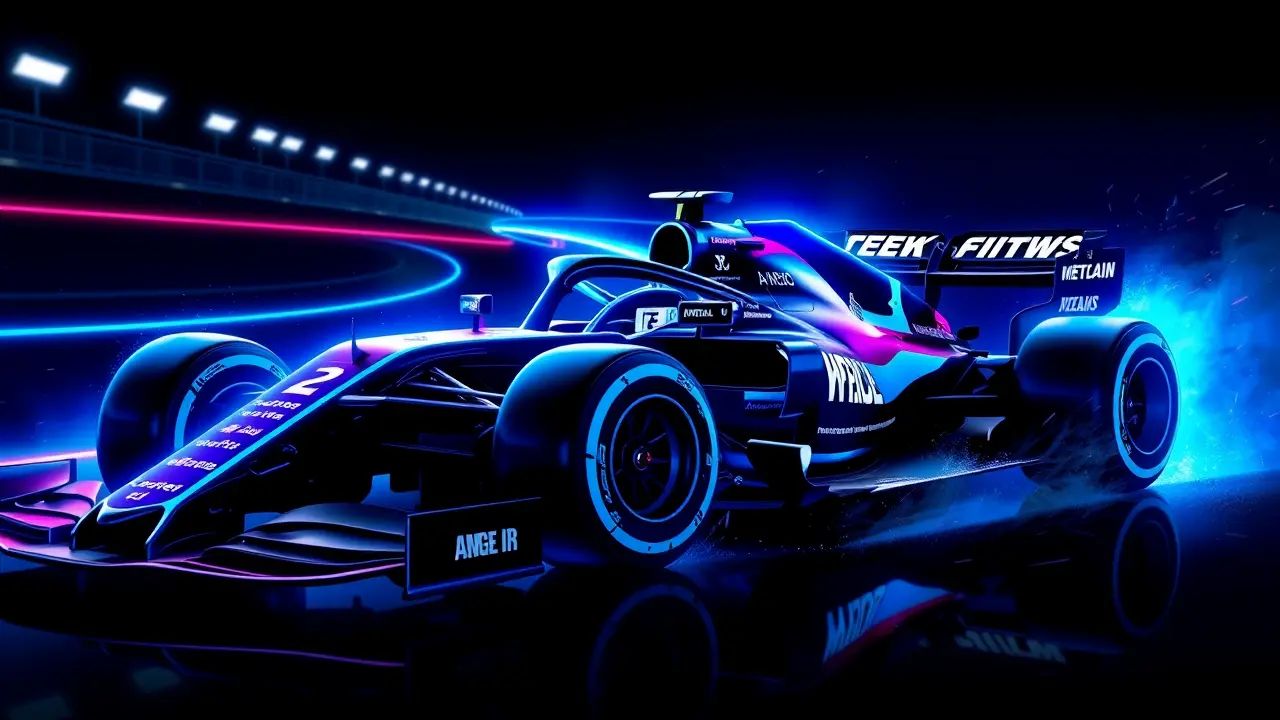Alex Albon: Williams' Podium Shows Team is on the Right Path
In the high-stakes world of Formula 1, where progress is often measured in agonizingly small increments, a podium finish can feel like a seismic event, especially for a historic team like Williams. Driver Alex Albon, reflecting on Carlos Sainz's third-place finish at the Azerbaijan Grand Prix, sees it not as a sudden, miraculous bolt from the blue, but as the tangible, hard-earned validation of a meticulously laid plan finally bearing fruit.He’s quick to temper the external euphoria, noting that the team's internal motivation was already white-hot, a culture of infectious energy and belief that didn't require a trophy for ignition. For Albon and the crew at Grove, this wasn't an impulse; it was a confirmation.It was the proof, etched in carbon fibre and champagne spray, that their trajectory is correct, that the countless late nights and strategic gambles are coalescing into a coherent upward path. This podium, he suggests, is less about a sudden surge and more about tasting the future, a harbinger of the competitive resurgence they are painstakingly building.It’s a signal that Williams, a name synonymous with the very soul of F1, is slowly but surely rewiring its DNA back towards the sharp end of the grid. To understand the weight of this moment, one must look back at the wilderness years Williams has endured.The team that gave the world icons like Ayrton Senna, Nigel Mansell, and a dynasty of championships, had become a perennial backmarker, a poignant reminder of how quickly fortunes can change in this merciless sport. Their struggles were a complex tapestry of financial constraints, technical missteps, and an inability to keep pace with the manufacturing and aerodynamic arms race led by giants like Mercedes and Red Bull.The 2022 regulatory reset offered a glimmer of hope, a chance for all teams to start from a relatively clean sheet of paper, but capitalizing on that opportunity required immense intellectual and financial firepower. The arrival of team principal James Vowles, poached from the strategic hub of Mercedes, was a statement of intent.Vowles brought with him not just technical acumen but a winner's mentality, a blueprint for operational excellence honed in a championship-winning environment. Albon’s own role in this revival cannot be overstated.After a bruising stint at Red Bull, he has rebuilt his career at Williams with a series of mature, points-scoring drives that often punched above the car's inherent capabilities. His feedback has been crucial in steering the car's development, making him a true team leader in the vein of a George Russell.The Azerbaijan result, achieved by Sainz in a Ferrari but powered by a Mercedes engine—the same power unit that propels the Williams—serves as a compelling data point. It demonstrates that the engine is competitive, that the fundamental power unit is not a handicap.This shifts the focus squarely onto chassis performance, aerodynamics, and operational execution—areas where Williams is concentrating its revival efforts. The parallels with other great F1 resurrections are instructive.McLaren’s own recent journey from the doldrums to regular podium contender is a masterclass in structural overhaul, involving significant investment in infrastructure, like a new wind tunnel and simulator, and the recruitment of key technical personnel. Ferrari’s return to race-winning form in 2022 after a multi-year drought was built on a similar foundation of long-term planning and technical restructuring.Williams appears to be following a similar, albeit uniquely tailored, playbook. The path ahead, however, is fraught with challenge.The midfield, comprising Alpine, Aston Martin, and the ever-improving Haas and AlphaTauri, is more ferociously competitive than ever. Consistency is the next mountain to climb; a single podium is a beacon, but stringing together double-points finishes is what ultimately secures championship position and the crucial prize money that fuels future development.Furthermore, the 2026 power unit regulations loom on the horizon, presenting both a massive opportunity for a reset and a colossal financial and engineering challenge. For Williams to truly return to the ranks of the leaders, they must navigate this transition flawlessly.In the grand chessboard of F1, Albon’s comments reveal a team that is playing the long game. They are not getting carried away by a single result, but they are using it as a crucial reference point to validate their strategy.It’s a mindset reminiscent of the meticulous, step-by-step building process that Sir Frank Williams himself championed in the team's heyday. The podium in Baku is therefore more than just 15 championship points; it is a symbol.It’s a symbol for the mechanics, the engineers, and the sponsors that the faith is being rewarded. It’s a signal to the paddock that an F1 giant is stirring from its slumber.And for drivers like Albon, it’s the taste of that future success, a potent reminder of what they are fighting for every time they strap into the cockpit. The checkered flag in Azerbaijan didn't just fall for Carlos Sainz; in many ways, it waved for the entire Williams team, marking not the finish line, but the start of a new, much more promising lap in their storied history.
It’s quiet here...Start the conversation by leaving the first comment.
© 2025 Outpoll Service LTD. All rights reserved.
